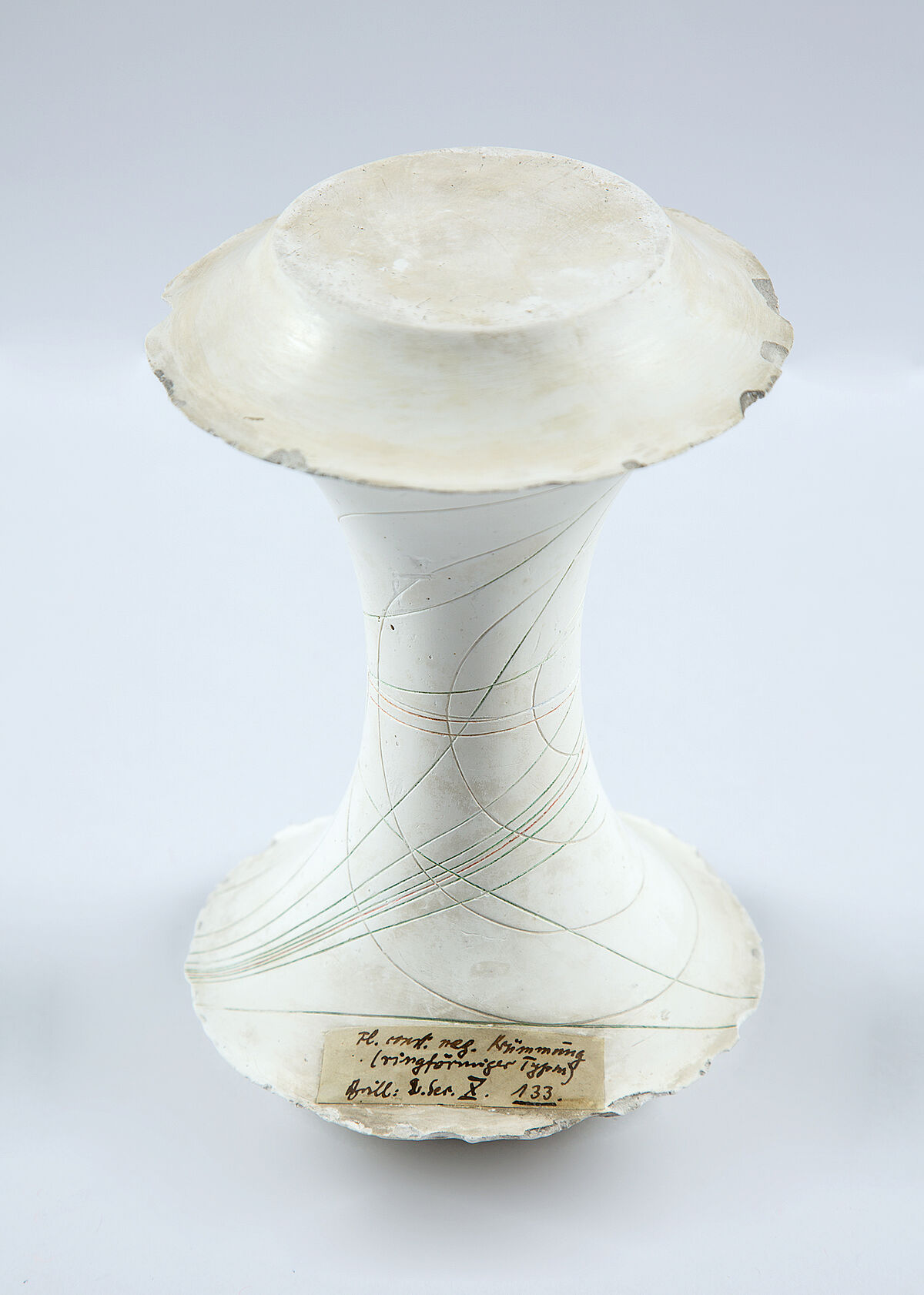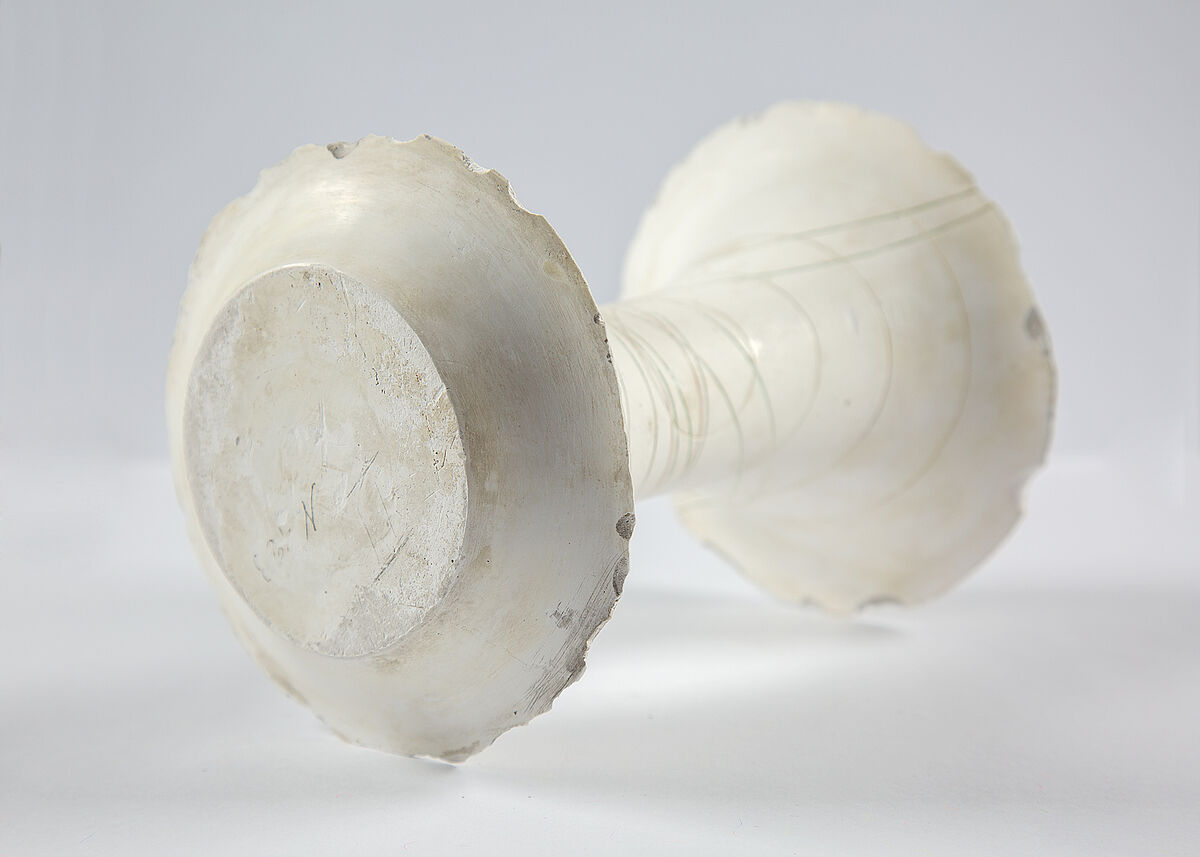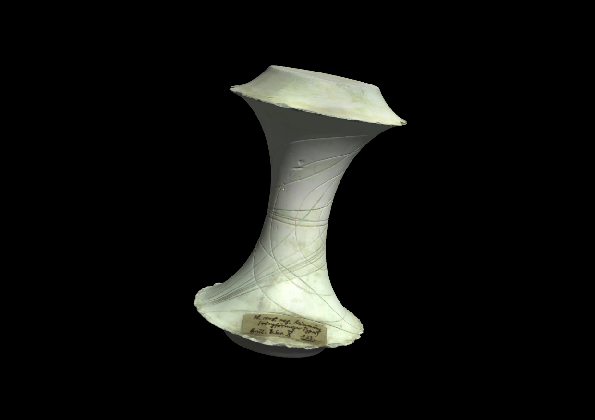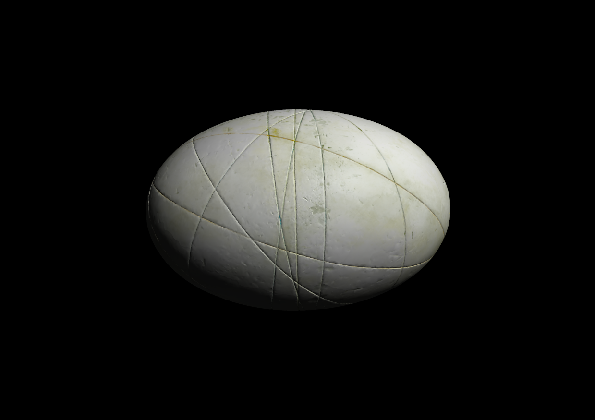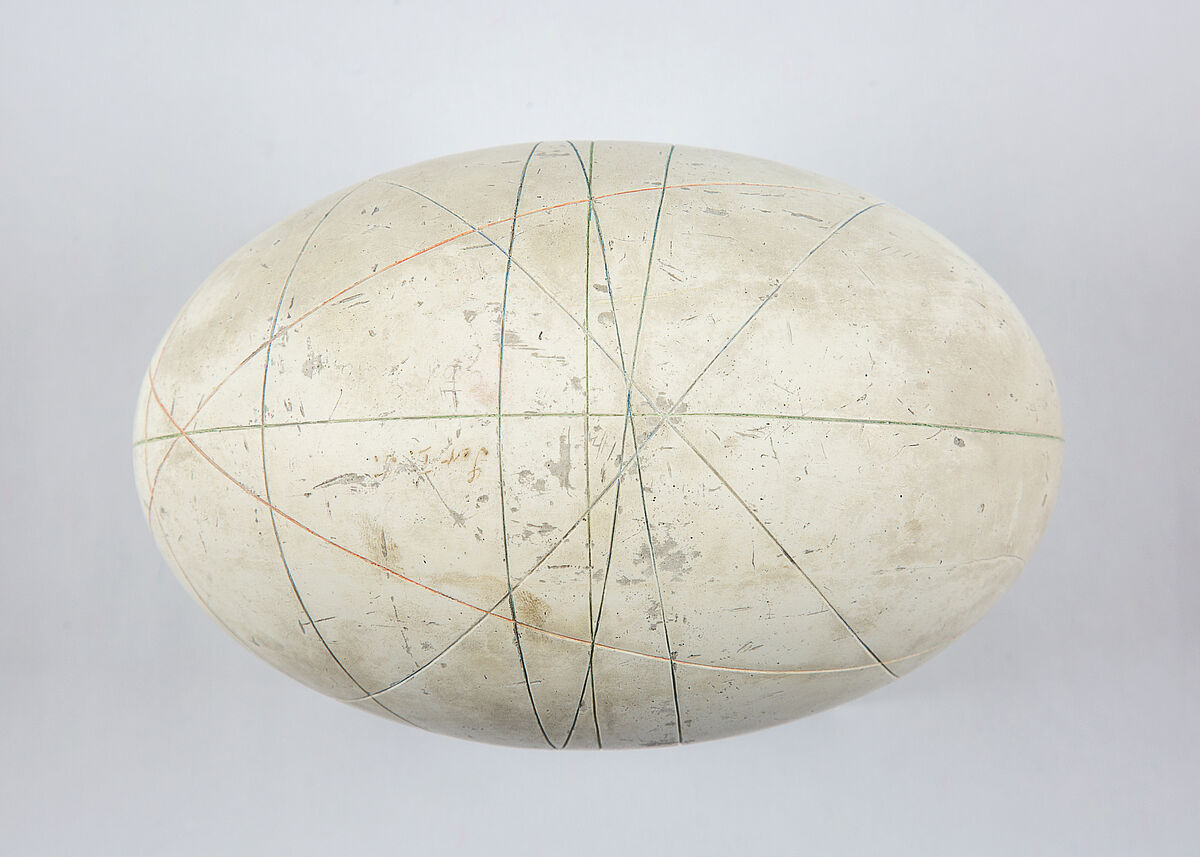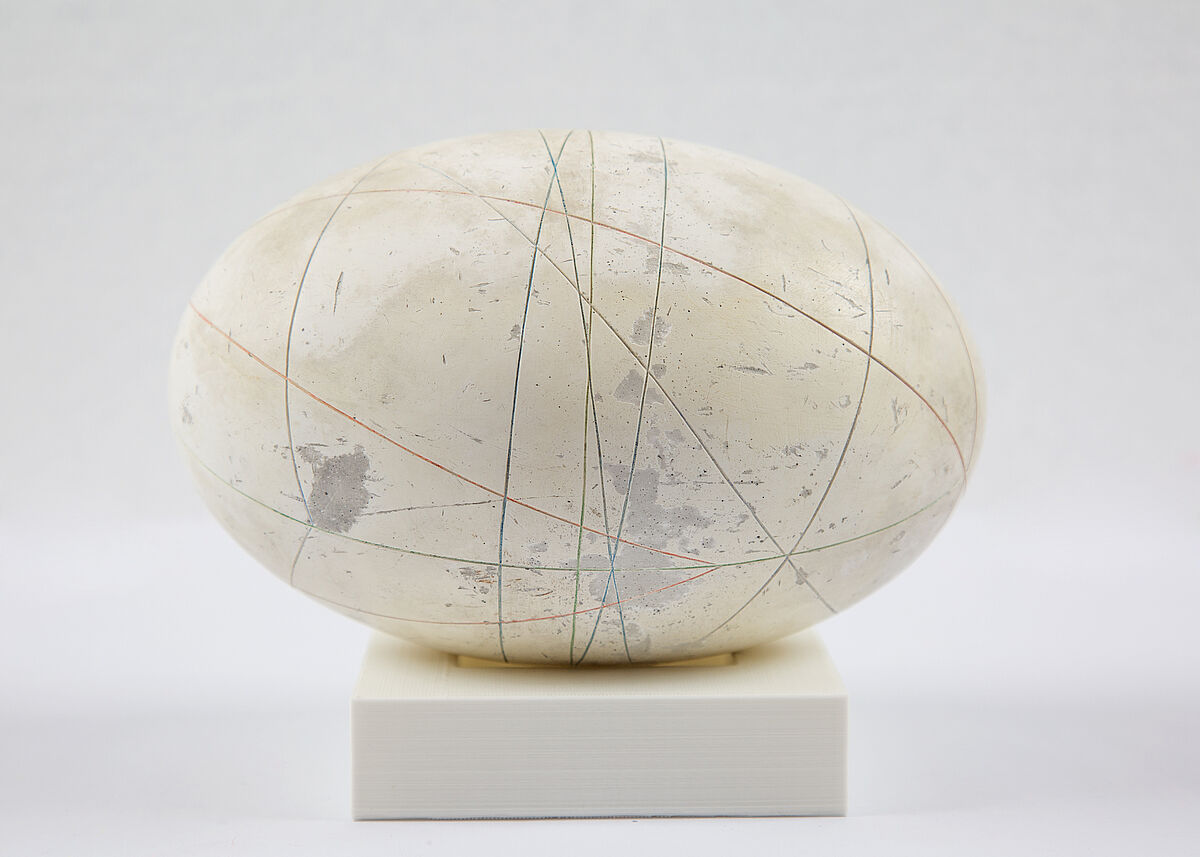Hyperboloid type
Surface of revolution with constant, negative measure of curvature (Hyperboloid type). Gypsum.
The object as series II,5 is found at Schilling [1]:
A system of parallel geodetic lines is drawn (green), out of which there are 2 (red) that asymptotically approach the circle. The closed curves are geodetic circles. By stud. math. W. Dyck in Munich. Explanations added.
(13x21 cm.) Mk. 14.—.
A detailed mathematic description on asymptote lines and geodetic circles is provided in [2] and [3].
Literature:
[1] Schilling, Martin (Editor): Catalogue of mathematical models, Leipzig (Publishing house of Martin Schilling) 1911, 7th edition, p.144, No.229.
[2] Fischer, Gerd (Editor): Photo Volume: Mathematische Modelle / Mathematical Models, with 132 photographs, Braunschweig/Wiesbaden (Vieweg) 1986, Photo(s) 83.
[3] Fischer, Gerd(Editor): Mathematical Models, Commentary, Braunschweig/Wiesbaden(Vieweg) 1986, p. 36-37.
Rotational ellipsoid
Nach Schilling, Martin (Editor): Catalog mathematischer Modelle, Leipzig (Publishing house of Martin Schilling) 1911, 7th edition. To be found on page 141 under No.213:
Extended rotational ellipsoid with 3 geodetic lines (originally red, purple,blue).
Generated by rotation of an ellipse with the equation x^2/4+y^2/4+z^2/9=1 around its large semi-axis.
The model was published in the context of the series I of the company Martin Schilling in 1877. The original was calculated and designed at the mathematical institute of the Royal Technical University Munich under the lead of Alexander Wilhelm von Brill by stud. math. Rohn.
The cast was offered in the catalogue for 7 Marks.
Traktrix
Rotation surface with constant, negative measure of curvature. Gypsum.
Rotation surface of the tratrix, generated by rotation around its asymptote.
The tratrix is defined by the characteristic that all tangents between the point of contact and a straight, the asymptote, have a constant length. This area creates the transition between the two aforementioned surfaces ([1, 228, II,4] and [1, 229, II,5]) and corresponds tot he ball for surfaces with constant, positive curvature. The curves drawn in blue on it are different geodetic lines, the red one an asymptote curve with its torsion, generally known, as the root out of the negative curvature measure of the surface at the affected area, i.e. for this curve, being all the same. By stud. math. Bacharach in Munich (B). Explanations added. (25x18cm.) Mk. 11.—. [1]
Literature:
[1] Schilling, Martin (Editor): Catalog of mathematical models, Leipzig (Editing house Martin Schilling) 1911, 7th Edition, S.144, Nr.230.
[2] Fischer, Gerd (Editor): Photo volume: Mathematische Modelle / Mathematical Models, with 132 photographs, Braunschweig/Wiesbaden (Vieweg) 1986, Photo(s) 82.
[3] Fischer, Gerd(Hrg.): Mathematical Models, Commentary, Braunschweig/Wiesbaden(Vieweg) 1986.

